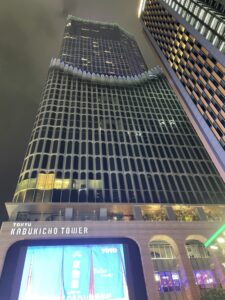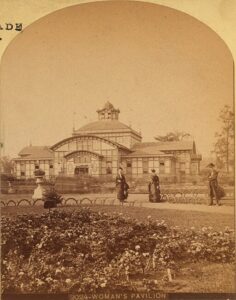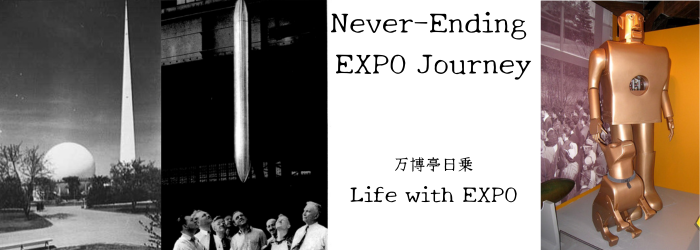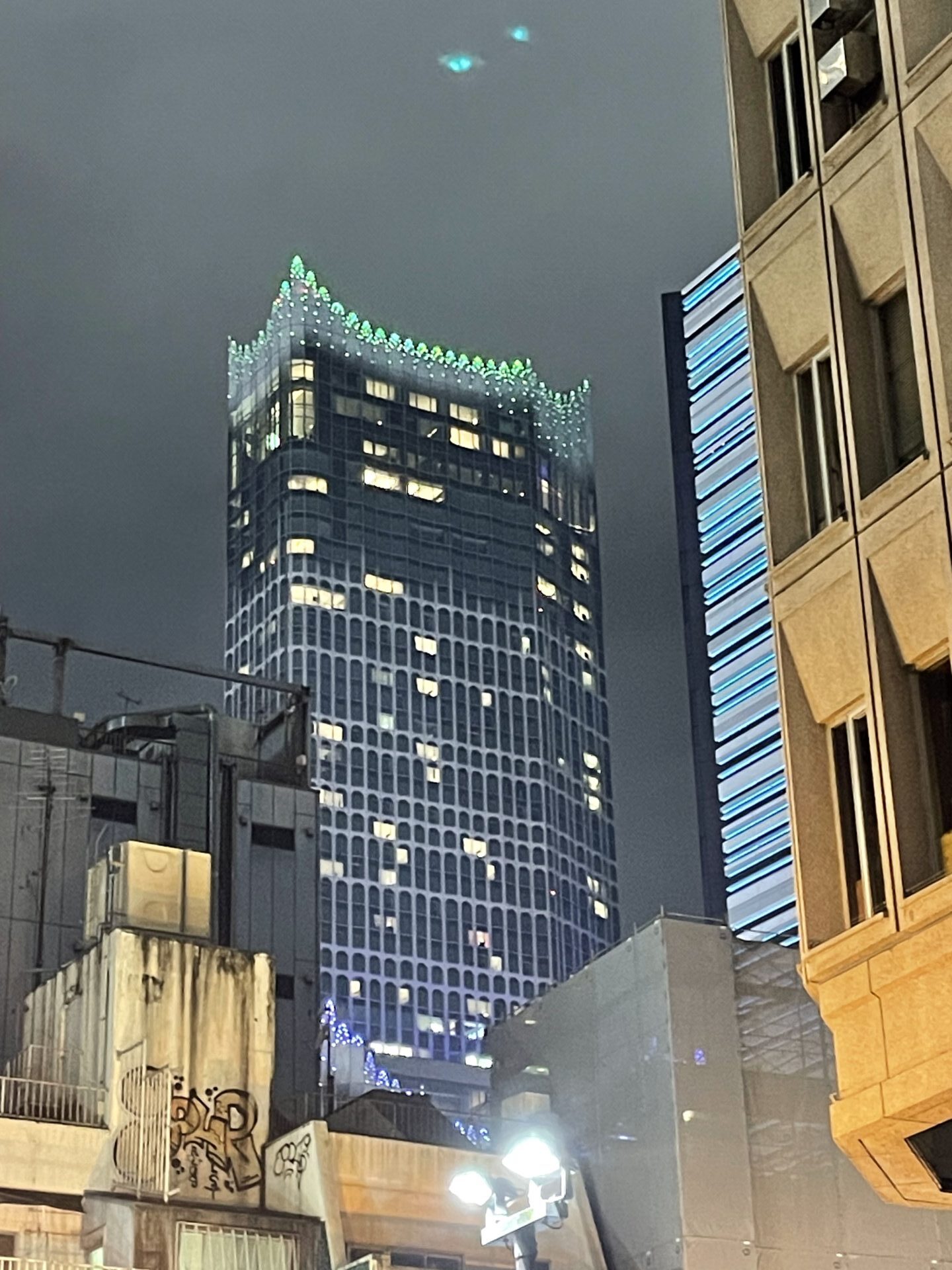Meet a friend in Shinjuku
I decided to meet up with a friend and have dinner in Shinjuku.
Unless it’s something like that, I rarely visit Shinjuku.
We met at Kinokuniya Bookstore, which has a much different atmosphere than before, and had a dinner over a drink nearby.
Come to think of it, since I’ve come all the way to Shinjuku, I told him that I’d like to visit the recently opened “Kabukicho Tower”.
Kabukicho after a long time
It’s probably been 15 years since I’ve been to Kabukicho.
A party of 5 or 6 executives from a Chinese state-owned company that I had previously worked with for the 2010 Shanghai World Expo, wanted to visit Kabukicho, so I took them on a tour (or rather, I don’t have the knowledge to guide them, just wandered around the city and getting a taste of the atmosphere) was the last time, I think.
It’s been a really long time. I honestly didn’t think I would come here again.
The streets are still chaotic. Executives of state-owned companies in China wanted to go there, so conversely, it may have an attraction for foreign tourists. Kabukicho is a powerful spot for those who like the chaotic hustle and bustle as former Hong Kong or Shanghai.
Anyway, there are many foreigners here. According to a friend of mine, it’s become easier to walk even with the recent ban on forcible soliciting.
In the midst of all this chaos, a 48-story modern building called “Kabukicho Tower” was erected, so I thought that the area would be safer, but the surroundings were the same.
People who like it enjoy the atmosphere they like, and people who don’t like it want to leave as soon as possible.

歌舞伎町タワー
KABUKICHO TOWER
Well, it is this “Kabukicho Tower”.
According to Wiki, it has 48 floors above ground and 5 floors underground, with a height of about 225m. The site area is about 4,600㎡.
Kume Sekkei and Tokyu Consultant JV are in charge of design, and Shimizu Corporation and Tokyu Construction are in charge of construction.
It is designated as a “Special Urban Renaissance District”.
This year, it was completed on January 11, 2023 and opened on April 14, 2023. Very recently.
Inside, there are no offices or residences, but entertainment facilities such as hotels, movie theaters, theaters, restaurants, and cafes. Starbucks also has a large store on the 1st and 2nd floors.
Yuko Nagayama Associates is in charge of the exterior design.
wiki says, Yuko Nagayama Associates is in charge of the exterior design.
Ms. Yuko Nagayama (1975- ) is an architect who is very active today.
On May 14, 2023, she also appeared on MBS’s program “Jonetsu-Tairiku“.
As mentioned in this program, Ms. Nagayama worked for “Jun Aoki Architectural Planning Office” on the condition that she had to become independent in four years, and then launched her own architectural design office. Mr. Jun Aoki is also an architect who previously belonged to Isozaki Atelier, the office of Mr. Arata Isozaki (1931 – 2022), with whom I had a relationship.
She recently designed the Japan Pavilion for the 2020 Dubai Expo (actually held in 2021 due to the COVID-19 pandemic). The situation was also taken up in “Jonetsu-Tairiku”.
In the program, there was a narration, (Regarding the design of the Japan Pavilion by Ms. Nagayama) “It is said that the geometric patterns that are familiar to the cultures of Japan and the Middle East were well received.”
The Panasonic Pavilion at the 2025 Osaka-Kansai Expo
She will also work on the Panasonic Pavilion at the 2025 Osaka-Kansai Expo. In the above “Jonetsu-Tairiku”, the narration said,
“…The pavilion of the façade that looks like a group of soap bubbles was adopted. She wanted to create a fantasy world by blowing wind through the film that reflects light.”
Panasonic Pavilion is named “Nomo no Kuni“.
The concept of the pavilion is “Unleash your mind, body, and world.”
<The word “nomo” in “Nomo no Kuni” is a coined word that reverses the word “mono (objects).” Various objects can be perceived differently depending on how you hold them, and objects are mirrors that reflect your heart. It is based on the concept that Panasonic has derived. >
I am looking forward to what kind of pavilion it will be.
“Women’s Pavilion“
And there was a press release in March 2023 this year, saying that she will also work on “Women’s Pavilion“.
According to the 2025 World Expo Association press release:
*
On Wednesday, March 8, International Women’s Day, Richemont Japan Limited (Cartier Japan) announced the official name of “Women’s Pavilion”, to be exhibited at Expo 2025 Osaka, Kansai, Japan (hereinafter referred to as the Expo) in collaboration with the Japanese government and the Japan Association for the 2025 world Exposition (hereinafter referred to as the Association), has been decided as “Women’s Pavilion in collaboration with Cartier” (hereinafter referred to as “Women’s Pavilion”). And the basic concept of Women’s Pavilion was also unveiled.
The Women’s Pavilion aims to design a better world where all people are in equality, respect each other, and can fulfill their potential for future society for our lives. The pavilion will be constructed by reusing the facade materials used for the Japan Pavilion at Expo 2020 Dubai.
We will continue consideration so that this pavilion could be an indispensable part of the Expo’s attractions by providing visitors with opportunities of learning and awareness in their experiences at this pavilion.
*
And it says that the lead architect (in charge of architectural design) is NAGAYAMA Yuko.
This must a fun pavilion. Moreover, since the façade of the Japanese pavilion at the Expo 2020 Dubai will be reused, this kind of environment-friendly projects should be continued as an attempt to be inherited at the Expo in the future.
Women’s Pavilion at the 1876 Philadelphia World’s Fair
Well, this name “Women’s Pavilion” reminds me of a World Exposition.
In fact, at the Centennial Exhibition of Arts, Manufactures, and Products of the Soil and Mine (1876 Philadelphia World’s Fair) held in Philadelphia, USA 147 years ago in 1876, “Women’s Pavilion” did exist.

Women’s Pavilion
1876 Philadelphia World’s Fair
The 1876 Philadelphia World’s Fair, commonly known as “The Centennial,” was an exposition celebrating the 100th anniversary of the United States Declaration of Independence.
At this World’s Fair, there were a total of 250 pavilions, instead of exhibiting everything in the main building, such as the “Crystal Palace“, as in the 1851 London Great Exhibition.
One of them was the “Women’s Pavilion”.
This “Women’s Pavilion” was the center of the feminist movement, and it was a building planned by “The Women’s Centennial Executive Committee” whose representative was a woman named Gillespie.
Elizabeth Duane Gillespie (1821-1901) was the great-granddaughter of Benjamin Franklin (1706-1790), who experimented with the discharge of lightning from kites and drafted the United States Declaration of Independence.
Gillespie’s “Women’s Pavilion” was not a pavilion run by a national government, a municipality, or a company, but a pavilion of what we now call a non-profit organization (NPO), run by citizen volunteers.
In order to realize this “Women’s Pavilion,” Gillespie worked energetically, forming various committees in local areas and raising funds.
In the U.S. at that time, women still had the right to vote in only a few states, but women already made up 20 percent of the workforce.
All the exhibits in this pavilion were either made by or driven by women and were intended to demonstrate women’s capabilities in all areas. There were needlework works, but there was also an idea that a young girl in Canada ran a steam engine, and the engine operated a press, etc., and the newspaper “New Century for Women” was printed on the press.
The Women’s Centenary Executive Committee, which Gillespie served as representative, could be said to be the beginning of the American civil movement and the feminist movement.
Richard Wagner composed the “Centennial Inauguration March”
At her request, German Richard Wagner (1813-1883) composed the “Centennial Inauguration March“.
On the recommendation of the German-born American conductor Theodore Thomas, the “Women’s Centenary Festival Executive Committee” commissioned Wagner to compose a march for the opening ceremony of the World Expo on May 10.
The “Centennial Inauguration March” can still be heard today. It’s a fairly easy-to-understand piece, but in general, it doesn’t seem to fall into the category of Wagner’s masterpieces.
However, the members of the “Women’s Centenary Festival Executive Committee” were very pleased, and when it was performed at the opening ceremony of the Expo, it was greeted with great applause.
In addition, the conductor Thomas liked this piece, and after performing it several times in the summer of 1876, the year of the World’s Fair, he performed it in a concert series in New York in October, and again at the closing ceremony of the World’s Fair on November 10th.
In this way, the 1876 “Women’s Pavilion” left many topics.
Looking at the Kabukicho Tower, a modern skyscraper that was just completed in 2023, I was reminded of the 1876 Philadelphia World’s Fair held about 150 years ago.
I’m really looking forward to seeing how the “Women’s Pavilion” for the 2025 Osaka-Kansai Expo, designed by Yuko Nagayama, who designed the “Kabukicho Tower”, will leave its name in the history of the World Expo.



